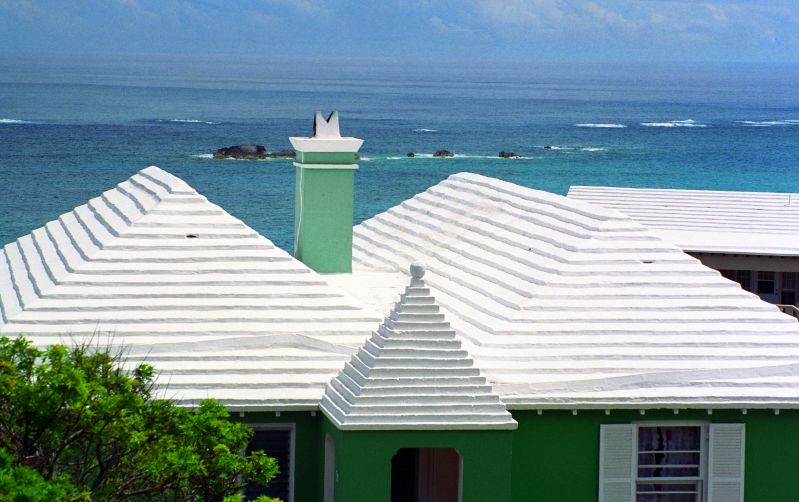How Cool Roofs Contribute to Energy Efficiency in Commercial Buildings
Published on by Water Network Research, Official research team of The Water Network in Academic
As a product of their energy and temperature saving advantages, cool roofing also has water-saving properties according to new research.

Image source: Wikimedia Commons
In warm climates, especially during summertime, you may have noticed that light-colored clothes keep you cooler while dark-colored clothes attract tons of heat. This is because lighter colors reflect sunlight while darker colors absorb it.
The same goes for roofs. Conventional, dark roofs absorb sunlight and trap more heat in the roof itself and also the ambient air. This rise in temperature causes plants in the area to require more water; the house itself becomes warmer and more energy is spent cooling it from the inside with air conditioning.
A solution to this rise in temperature and energy consumption is installing a “cool roof”, or a roof that is lightly colored and able to reflect light and heat back up towards the sun.
Cool-Colored Roofs cut Water Consumption
Because 90% of buildings in the U.S. have dark, heat-absorbing roofs, new research has shed light on another benefit of cool roofs that could push toward their adoption by companies and homeowners alike.
Researchers at the DoE’s Berkeley Lab conducted a study that revealed the water-saving benefit of cool roofs, primarily due to the cutting of urban irrigation water needs.
The Berkeley Lab research team, led by Pouya Vahmani and Andrew Jones, ran simulation models of 18 counties in Northern and Southern California over 15 years, and found that wide adoption of cool roofs could cut outdoor water demand by up to 9%.
Had all its roofs been switched to cool roofs, Los Angeles County alone could save up to 83 million gallons per day (9.1%), the highest rate among the 18 counties studied.
Read full article: Edgy Labs
Access study: Nature Communications
Attached link
http://www.youtube.com/embed/ZUZWvgjVsyoMedia
Taxonomy
- Urban Water
- Energy
- Urban Resource Management
- Urban Water Supply
- Urban Water Infrastructure